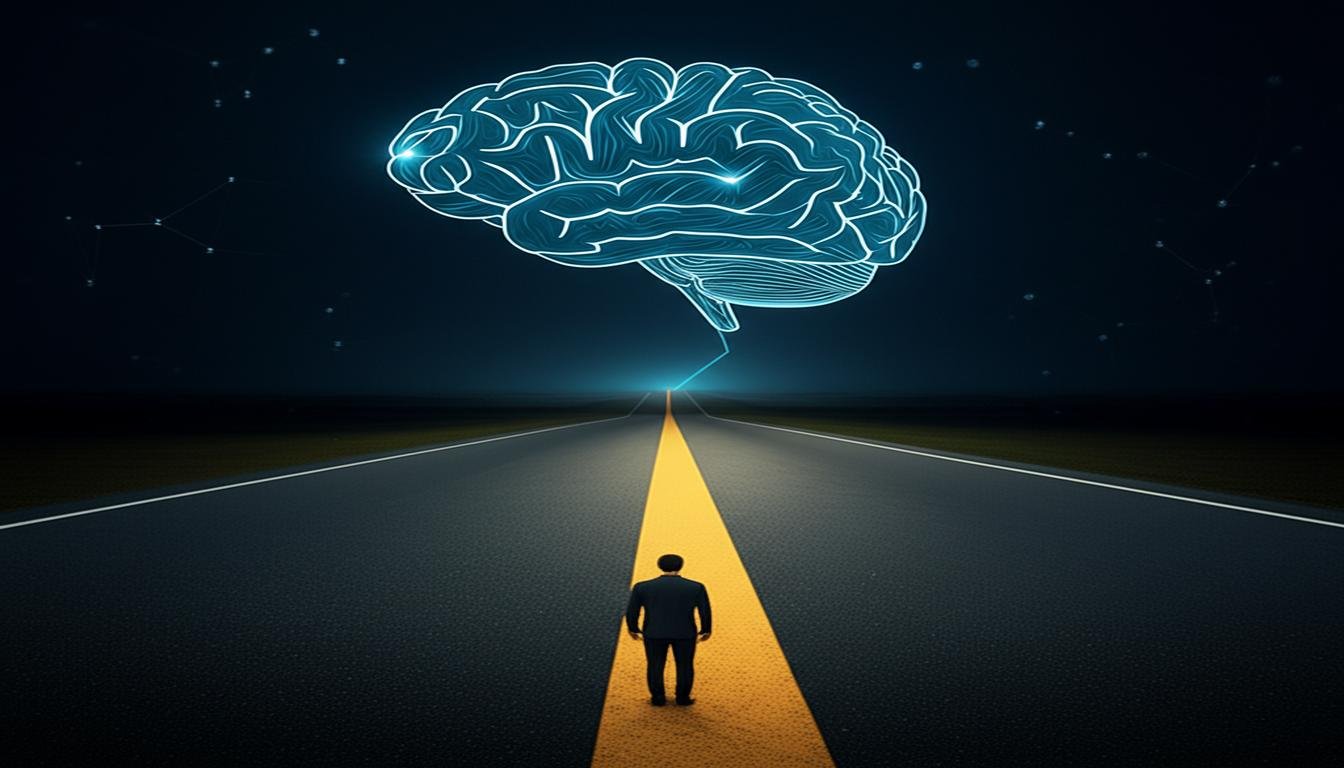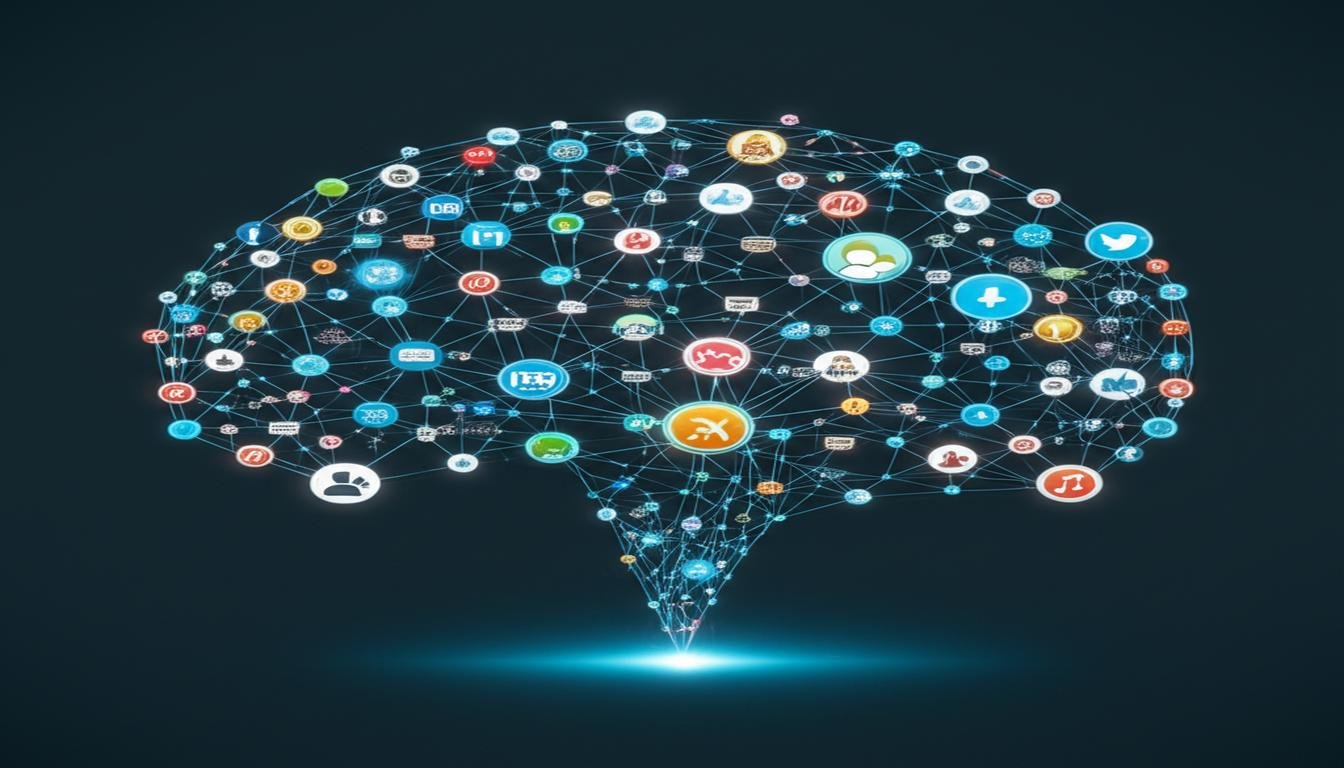Did you know that the AI tools we use every day are just 10% of what’s possible? Systems like ChatGPT and Midjourney get a lot of attention. But they’re just the beginning in a field that’s growing fast.
Generative AI isn’t just one tool. It’s a range of models that change how we make, analyze, and solve problems.
Generative AI systems don’t just look at data like old algorithms do. They create new content. This can be anything from legal contracts to protein designs.
The secret is knowing how each model works. Some are good for text, others for images, and some can do both and more.
So, why does this matter to tech pros? Picking the right model is key to a project’s success. A chatbot needs different tech than a tool for medical images. We’ll show you how different companies use these models in real life.
Table of Contents
Key Takeaways
- Generative AI creates original content, unlike predictive models that analyze existing data
- Major categories include text, image, code, and multimodal systems
- Architecture differences (transformers vs. diffusion models) dictate use cases
- Real-world applications span from creative arts to scientific research
- Model selection impacts implementation costs and technical requirements
- Emerging hybrid systems combine multiple AI approaches
Understanding Generative AI Fundamentals
Generative AI doesn’t just look at data – it makes new content. It does this through complex processes. Let’s dive into how it works with examples that everyone can get.

What Makes AI “Generative”?
Traditional AI systems are like librarians, sorting information. Generative AI is like an author, making new things. It does this through three main abilities:
- Pattern synthesis: Mixes learned parts in new ways
- Probabilistic creation: Makes many possible outputs
- Context-aware iteration: Improves based on feedback
Think of a painter who learns from 10,000 landscapes. Then, they create new art using those skills. Generative models do the same but with digital data.
Generative AI isn’t about copying – it’s about mixing learned patterns in smart ways.
Neural Networks & Deep Learning Basics
At the core are neural networks, digital brains with layers. They process information in a way different from traditional machine learning:
| Aspect | Neural Networks | Deep Learning |
|---|---|---|
| Layers | 3-5 hidden layers | 15+ hidden layers |
| Data Needs | Thousands of examples | Millions of examples |
| Applications | Basic pattern recognition | Complex content generation |
Deep learning lets systems find patterns in data. It’s like recognizing edges before shapes in images. This is what makes Google’s predictions and AI models possible.
Three main parts make this work:
- Input layers: Get raw data (text, pixels, etc.)
- Hidden layers: Change data through connections
- Output layers: Make the final content
Key Types of Generative AI Systems
Generative AI isn’t a one-size-fits-all technology. Different architectures excel at specific tasks, from creating photorealistic images to composing human-like text. Let’s explore five foundational systems powering today’s AI revolution, complete with real-world examples showing their unique capabilities.

1. Generative Adversarial Networks (GANs)
Architecture: Generator vs Discriminator
Imagine an art student (generator) trying to fool an art critic (discriminator). GANs work through this exact adversarial process:
- The generator creates synthetic data like fake images
- The discriminator tries to spot artificial creations
- Both networks improve through continuous competition
GAN Applications: From Art to Medicine
StyleGAN’s photorealistic human faces show GANs’ creative power. Medical researchers use them to:
- Synthesize rare disease scans for training
- Enhance low-resolution MRI images
- Generate 3D protein structures for drug discovery
2. Variational Autoencoders (VAEs)
Latent Space Manipulation Explained
VAEs compress data into a mathematical “latent space” where:
- Similar concepts cluster together
- Users can interpolate between features
- Minor adjustments create major output changes
VAE Use Cases: Anomaly Detection & More
Manufacturers use VAEs to spot defective products by comparing real-time data to normal patterns. Healthcare systems use them to:
- Detect irregular heart rhythms
- Identify rare cancer cell formations
- Generate synthetic patient data for research
3. Transformer-Based Models
Attention Mechanisms Demystified
Transformers analyze relationships between all elements in input data simultaneously. Their attention mechanism works like:
- Identifying key words in a sentence
- Weighing their importance
- Predicting the most relevant next word
Text Generation Breakthroughs
GPT-4’s human-like writing stems from transformer architecture. Practical applications include:
- Automated customer service responses
- Multilingual translation at scale
- Code generation from natural language prompts
4. Diffusion Models
Stepwise Refinement Process
These models gradually transform random noise into coherent images through:
- Adding controlled noise to training data
- Learning to reverse this process
- Iteratively refining outputs
Commercial Image Generation Platforms
DALL-E 3 and Stable Diffusion leverage diffusion models for:
- Marketing asset creation
- Architectural visualization
- Personalized product design
5. Autoregressive Models
PixelRNN & WaveNet Architectures
These models predict sequences one element at a time:
- PixelRNN generates images pixel-by-pixel
- WaveNet synthesizes speech sample-by-sample
- Maintains long-range coherence through memory cells
Multimodal Generative Systems
Generative AI is moving beyond just text, now combining text, visuals, and audio. These systems are at the forefront of types of generative artificial intelligence. They open up new ways to create and solve problems.
Combining Text, Image & Sound
Frameworks like GPT-4 and Google’s Gemini show AI can handle many data types at once. They link text prompts with sounds and visuals. For example, “stormy ocean sunset” might get matching wave sounds and textures.
Three main parts make these integrations work:
- Cross-modal alignment: Neural networks connect ideas across media (like linking “crashing” to sounds and visuals)
- Unified latent space: Shared layers help translate between formats, keeping meaning intact
- Temporal synchronization: Important for videos, ensuring lips and speech match up
Developers use tools like:
- OpenAI’s CLIP for pairing text with images
- Coqui TTS for voice synthesis
- Stable Diffusion API for image generation
Testing output coherence is key. Start with simple tasks like adding sound to animations. Then move to more complex projects like virtual assistants.
Also Read: Human Brain vs Artificial Intelligence
Industry-Specific Implementations
Generative AI is changing the game in many fields. It’s helping create life-saving drugs and blockbuster movies. Let’s see how two sectors use it in unique ways.
Healthcare: Drug Discovery AI
Pharmaceutical companies are using generative adversarial networks (GANs) to speed up drug development. Insilico Medicine cut the time for early-stage molecule design from 4 years to 18 months. Their AI analyzes chemical properties and finds viable compounds through simulations.
| Phase | Traditional Approach | AI-Driven Process |
|---|---|---|
| Target Identification | 6-12 months | 2-4 weeks |
| Compound Screening | $2M average cost | $200K with 90% accuracy |
| Preclinical Trials | 70% failure rate | 50% success improvement |

Entertainment: AI-Assisted Content Creation
Streaming giants like Netflix use machine learning to improve scripts. Their algorithms check dialogue, plot, and character development. This helps them make better decisions.
- Genre-specific pacing adjustments
- Cross-cultural localization strategies
- VFX rendering optimizations using tools like Unity Muse
Game studios are combining neural radiance fields (NeRFs) with traditional animation. This makes environments 60% faster. AI also creates background characters for games, each with its own behavior.
Emerging Generative AI Technologies
The AI world is seeing big changes. New ideas mix science with machine learning. Two big ones are changing the game: using physics in AI and mixing different AI types. These steps help solve old problems and open new doors for use.
Physics-Informed Neural Networks
Old neural networks often don’t get science right. Physics-Informed Neural Networks (PINNs) fix this by adding science rules into their design. NVIDIA’s Modulus shows this in climate modeling, following fluid dynamics:
- Embed equations directly into loss functions
- Require 10x less training data than conventional models
- Produce physically plausible outputs
PINNs are great for engineering and material science. They keep to real physics and make good predictions.
Neuro-Symbolic Hybrid Systems
These systems mix finding patterns with logical thinking. IBM’s Project CodeNet shows this mix by:
- Analyzing code patterns using convolutional networks
- Applying symbolic logic for error detection
- Generating repair suggestions through hybrid reasoning
This design is good for tasks needing both instinct and structured thinking. Banks use it for spotting fraud, mixing data checks with rules.
These new techs show neural networks are growing. They’re not just about data anymore. By adding knowledge and logic, they make AI more reliable and understandable. This is key for using AI in important areas like health and finance.
Ethical Considerations
As generative ai systems get better, developers and groups face big ethical choices. These choices shape how these tools affect society. They need to balance innovation with responsibility by focusing on two main areas: stopping algorithmic bias and dealing with intellectual property rights.
Practical Approaches to Reduce Bias
How well data is trained affects AI results. IBM’s AI Fairness Toolkit helps teams spot hidden biases by:
- Demographic parity checks
- Comparing performance metrics across different groups
- Using bias heatmap visuals
Google’s Model Cards framework goes further by documenting:
- Data sources and how it’s collected
- Known limitations of the model
- Best ways to use the model
Navigating Content Ownership Complexities
The Getty Images vs Stability AI lawsuit shows the growing issue of copyright. When AI makes content that looks like copyrighted stuff, courts have to figure out:
- Who owns AI-created content?
- How should we license training data?
- What counts as fair use in AI?
Smart teams are now using:
- Digital watermarking for AI-made assets
- Tracking where training data comes from
- Clear agreements about who owns the output
The key lies in building accountability from the first line of code – not as an afterthought.
Generative AI Development Tools
Choosing the right toolkit is key to building generative AI solutions. It affects how fast you can start working and how well your project will scale. You have two main choices: open-source frameworks or commercial platforms.
Open-Source Frameworks
Tools like Hugging Face Transformers and PyTorch Lightning make AI development open to everyone. They give you:
- Full control over model architecture and training data
- Free access to cutting-edge research implementations
- Active developer communities for troubleshooting
Hugging Face’s platform has 50,000+ pre-trained models, three times more than Azure AI Studio. For detailed customization, developers use LoRA adapters to tweak models like Stable Diffusion:
- Install Diffusers library via pip
- Load base model weights
- Apply Low-Rank Adaptation matrices
- Train on domain-specific image datasets
Commercial Platforms
Big teams often choose OpenAI API and Google Vertex AI. These platforms offer:
- Managed infrastructure scaling
- Compliance-ready security protocols
- Pay-as-you-go pricing models
| Factor | OpenAI API | Self-Hosted LLaMA |
|---|---|---|
| Setup Time | 5 minutes | 2+ days |
| Customization | Limited | Full control |
| Cost (Monthly) | $0.02/1k tokens | $800+ GPU costs |
Commercial platforms reduce deployment friction, but open-source tools future-proof your machine learning stack.
When deciding, think about your team’s neural network skills and how well you can keep things running. Startups might start with OpenAI’s API. Research teams might prefer tweaking Llama 2’s weights directly.
Future of Generative AI
The world of generative AI is changing fast. New designs are opening up new possibilities. Developers are pushing limits, creating models that can do more than ever before.
Next-Generation Model Architectures
Big tech companies are racing to create new AI systems. Google’s Gemini Ultra uses a special framework. It’s like a team of experts working together.
This design makes processing faster and uses less energy. It also adjusts resources as needed. This makes it more efficient.
OpenAI is working on something called Q* initiative. It uses quantum-inspired algorithms. Early reports say these models could do amazing things.
| Feature | Current Models | 2025-2030 Target |
|---|---|---|
| 3D Generation Speed | 2-5 minutes per scene | Real-time rendering |
| Multimodal Fusion | Basic text-to-image | 5-sense simulation |
| Energy Consumption | 300 kWh per training run | Under 50 kWh |
Experts say three things will shape AI research by 2030:
- Neuromorphic computing integration
- Self-improving model ecosystems
- Ethical architecture baked into core designs
These changes will impact creative fields a lot. For example, real-time 3D environments could change game making. Physics-informed neural networks might make product prototyping instant.
As these technologies grow, they’ll open up new chances in generative AI.
Conclusion
Knowing the strengths of each generative AI type is key. GANs make photorealistic images, while transformers like GPT-4 are top for text. Diffusion models, like Stable Diffusion, are great for images. VAEs are good at compressing data.
For your project, follow this guide:
1. Know what you want to create (images, text, or both)
2. Check if your data is good enough
3. See how much computing power you have
4. Think about the ethics
Start with tools like Hugging Face or Google AI Platform. They make it easy to try out different AI systems. Always check your AI’s fairness, using tools like IBM’s AI Fairness 360, in fields like healthcare or finance.
The world of generative AI is always changing. Keep up with news from OpenAI and Anthropic. Also, read MIT Technology Review’s AI newsletter or NVIDIA’s blogs for the latest.
Want to start using generative AI? Check out our toolkit guide. It has frameworks, datasets, and checklists for your project’s needs and ethics.
FAQ
What differentiates generative AI from predictive AI?
Generative AI makes new content like text or images. Predictive AI looks at data to guess what might happen next. For example, ChatGPT talks to you, while Amazon guesses what you might buy. They both use neural networks but in different ways.
How do neural networks enable generative AI systems?
Neural networks are like digital brains that learn from data. They help generative AI systems like Google’s Transformer to understand and create text. This way, GPT-4 can guess the next word in a sentence.
When should developers choose GANs over VAEs or Transformers?
Use GANs for making detailed images. VAEs are good for finding new medicines. Transformers are best for writing and understanding long texts.
Can diffusion models handle video generation better than autoregressive models?
Yes, diffusion models like Stable Diffusion 3.0 are better for videos. They make each frame consistent. Autoregressive models, like WaveNet, work frame by frame, which can cause issues in long videos.
How do multimodal systems like Google Gemini process different data types?
Gemini uses cross-modal attention layers to mix text and images. This lets it understand and describe images in words. It keeps the meaning of both visual and text elements.
What healthcare breakthroughs use generative AI architectures?
Insilico Medicine’s GAN-based Pharma.AI creates new drugs. Paige.AI makes fake medical images for training cancer detection systems. This keeps patient privacy safe.
How does NVIDIA’s Modulus integrate physics into generative AI?
Modulus uses physics-informed neural networks to follow physical laws. This makes climate modeling more accurate. Unlike GANs, it doesn’t just guess.
What tools exist for mitigating bias in generative AI outputs?
IBM’s AI Fairness 360 Toolkit finds and fixes biased data. Google’s Model Cards show system limits. Hugging Face’s BERTScore checks text for toxicity.
When should teams choose OpenAI’s API over self-hosted models like LLaMA?
OpenAI’s GPT-4 API is easy to use but costs money. Meta’s LLaMA 2 gives more control but needs a lot of computing power. Choose based on how fast you need results and how much you value data control.
How might quantum computing impact next-gen generative AI systems?
Quantum computing could make training AI much faster. Google’s Quantum Tensor Networks might help with 3D content. But, IBM’s Qiskit Machine Learning shows quantum’s benefits are limited for now.














